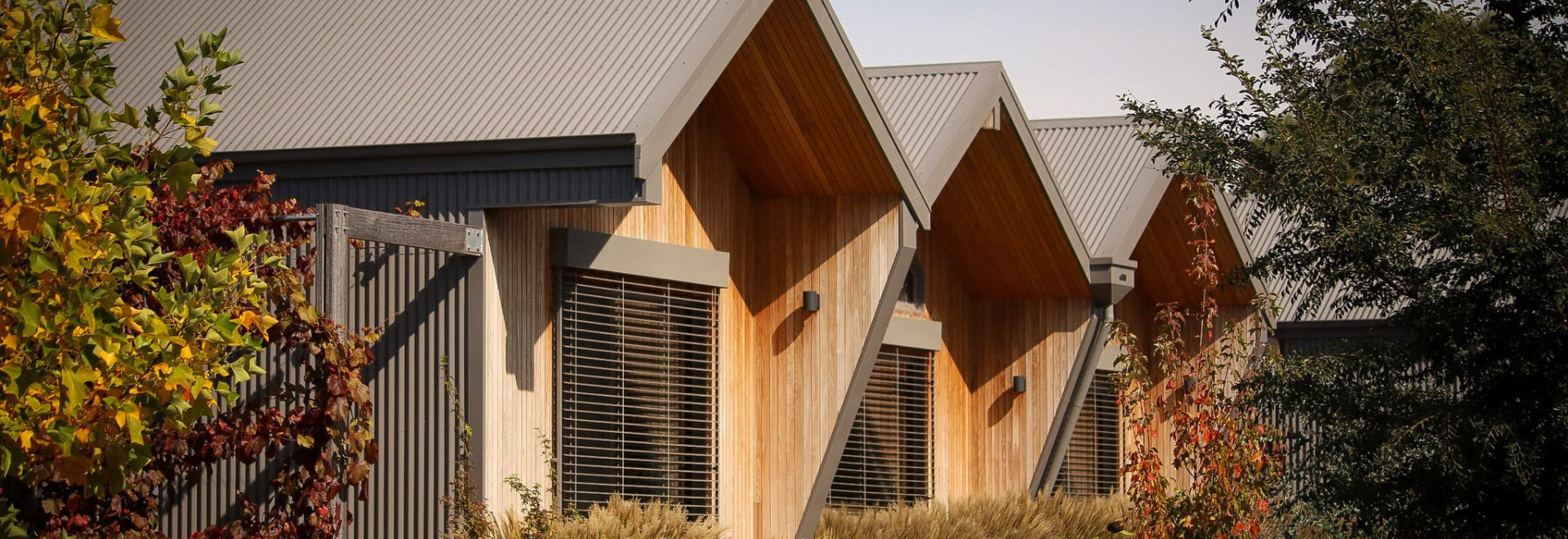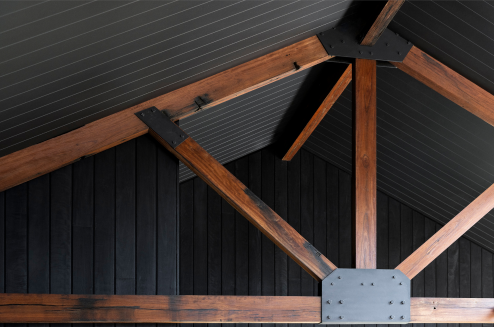
BIOPHILIC DESIGN: A holistic approach
Architecture has been described as a balance of science and art.
It is about the physical and the experiential.
It is the culmination of intellectual theory, and intuitive creativity.
It is both left-brain and right-brain thinking.
This balancing act is paramount to our philosophy of taking a holistic approach to all our projects.
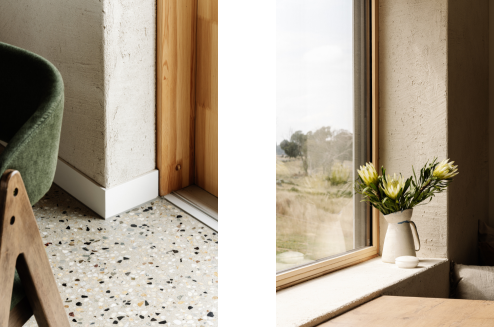
Isn’t sustainable design all about building science?
Yes, and…
In addition to our expertise in a building’s structure, building-science, thermal-performance, energy-efficiency and healthy indoor air quality, we also want to create spaces that enrich your experience of inhabiting the building. This is important for sustainability, but also for human health and wellbeing. This is where biophilic design comes in!
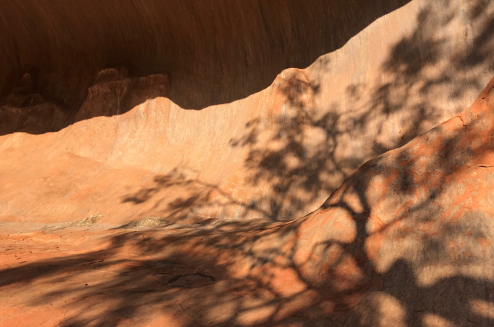
Human-Nature Connection
Biophilia is our deep desire to connect with nature.
And the truth is that WE ARE nature.
This disconnect of humans from the planet is one of the greatest tragedies of the Anthropocene era which has led us to the climate- & biodiversity-emergency we now face. Ancient indigenous wisdom of first-nations people from all around the world, live with deep respect and reverence for the earth and all living creatures. Here in Australia this is known as ‘caring for country’ as you would care for your kin, with love and compassion. We are in a symbiotic relationship with our environment, and this is why the health of the planet and our own health are so intrinsically linked.

Biophilia, health & wellbeing
If you close your eyes and relax, and think of a favourite place to be where you feel calm and at ease and perhaps even joyful… where is it that place?
Is it an office, or a shopping centre? Is it outside? (It is indoors, is it somewhere that has a magnificent view, or perhaps a cosy nook with some pot-plants?)
Most people think of a place in the natural environment. Often a beach, or the bush or a mountain-top, or perhaps a river, or even a quiet shady spot in your backyard to laze under a tree.
Having reverence for the earth and all its beauty is one of the joys of being human, as this delights all of our senses! To appreciate the first rays of light as the sun rises, to taste the salty sea air as waves crash at the shoreline, to marvel at clouds as they morph before your eyes, to be enchanted by the play of dappled light in a forest, to bask in the light of a full moon, or gaze in awe at a star-studded sky and contemplating your existence…
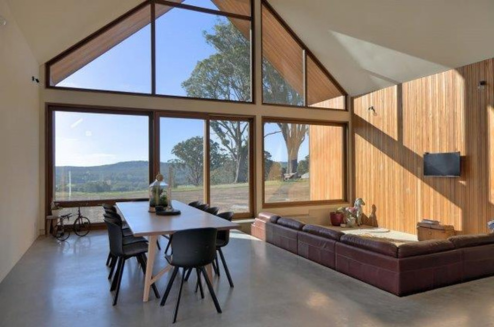
Why biophilic design?
Since we spend 90% of our time indoors, the aim of Biophilic Design is to enhance our connection to nature when we are inside. There are many studies to show that this improves our health and wellbeing, can help us feel less stressed, and be more productive. (And this sense of connection has been proven to motivate behavioural change by helping nurture our sense of responsibility to care for our planet.)
Rachel Carson wrote: “The more clearly we can focus our attention on the wonders and realities of the universe about us, the less taste we shall have for destruction.”
Biophilic Design connects us with nature’s cycles of day and night, and the changing seasons.
Biophilic Design engages all our senses – not only sight which is often what is the primary consideration with what a building looks like – but also sounds, smells, textures, and perhaps tastes too.
Biophilic Design offers a connection to all the elements for a rich experience – earth, air, fire, water, and wood.

How might biophilic design be incorporated into sustainable design?
Here’s some design features that may be included as part of a biophilic design response:
- Natural daylight
- Gentle play of light and shadows and silhouettes
- Glorious sunshine on a winters’ day
- Capturing a cool breeze in summer
- The rustling of autumn leaves
- Sound (& smell) of spring rain falling – #petrichor is the word for this!
- A view to drifting clouds
- The warmth and texture of natural materials like timber, stone, rammed earth, hempcrete, natural lime-render over straw, etc. (instead of lots of shiny flat clinical surfaces).
- An element of surprise and delight as you journey through your home
- A cosy place to feel safe from the world (Prospect & Refuge theory)
- A large bright spacious area for connection with family and friends
- Visual and physical connection to nature outside
- Windows that create “bird-hides” to observe feathered-friends from inside
- Fragrance of fresh flowers, or home-grown herbs
- Sound and sight of the movement of water – ponds, fish tanks, water-features, rain chains, etc.
- Primal desire to be sitting in front of a fire on the coldest nights – perhaps a fire-pit outdoors for occasional gatherings
- Curves, patterns, textures from nature than can inspire the architecture
- Artworks that you love
- Indoor Plants to literally bring nature inside (often this is the first feature associated with biophilic design, but there’s many more!)
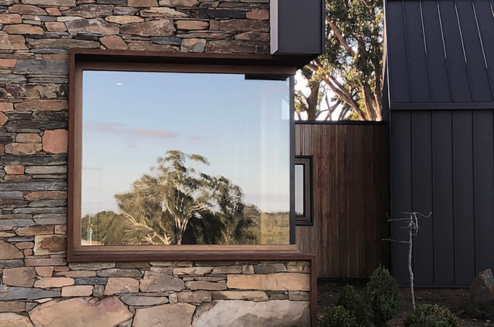
Are there prescribed Biophilic Design Elements?
Stephen Kellert created a guiding Biophilic Design framework which comprises six biophilic elements with 70 attributes in total. The elements are:
- Environmental Features
- Natural Shapes and Forms
- Natural Patterns and Processes
- Light and Space
- Place-based relationships
- Evolved human-nature relationships
You can learn more about these in the resources section below.
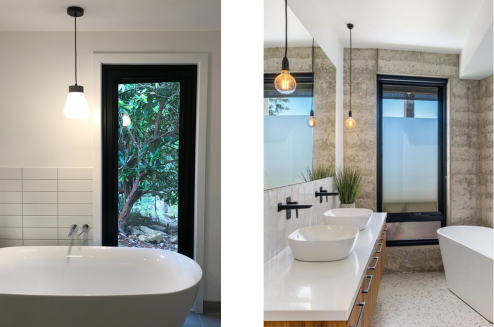
Does Biophilic Design cost more?
Not at all!
It’s about making conscious choices during the design process. We’re here to guide you – whether you’re doing a small retrofit project, a substantiation renovation, a new home, or a commercial/community project, biophilic design principles can be incorporated.
Contact us to find out more about how we can work with you.
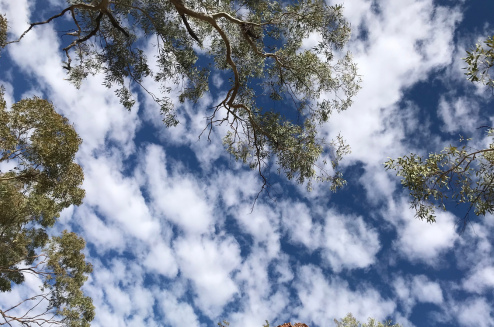
Biophilic Design Resources
Our Director Talina Edwards learnt a lot about Biophilic Design with the International Living Future Institute’s (LFIA) Living Accreditation training. Here’s some of the resources that may be useful if you want to explore this in more depth:
- LFIA Foundations of Biophilic Design Certificate
- LFIA Biophilic Design Toolkit (free)
- LFIA Biophilic Design Guidebook (free)
- Terrapin Bright Green: 14 Patterns of Biophilic Design (free)
- Creating Biophilic Buildings (Book by Amanda Stugeon)
- Biophilic Design: The Theory, Science and Practice of Bringing Buildings to Life (Book by Stephen R. Kellert, Judith Heerwagen, Martin Mador)
- Biophilia (Book by Edward O Wilson)
- “Biophilic Design and Climate Change: Performance Parameters for Health” Article

